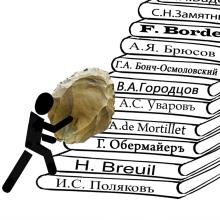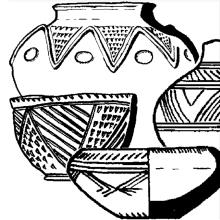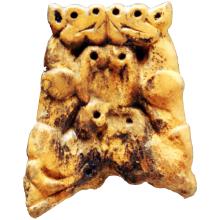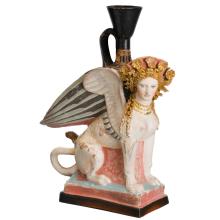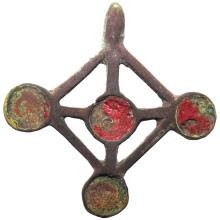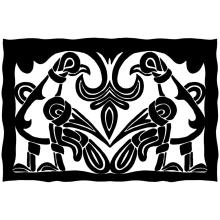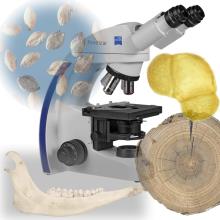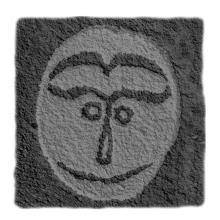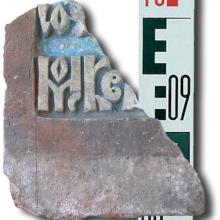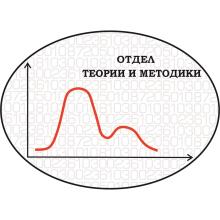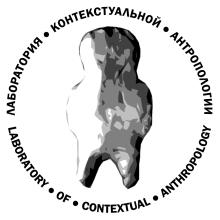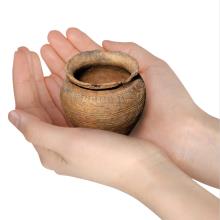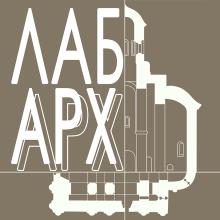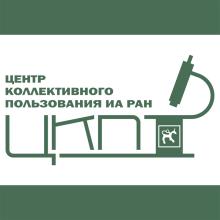
Yuryev Monastery in Veliky Novgorod, view from quadcopter
The Novgorod Architectural and Archaeological Team of the Institute of Archaeology of the Russian Academy of Sciences (led by V.V. Sedov) has been working in the area of the oldest monastery i.e., the Yuryev Monastery, at Veliky Novgorod since 2013. During the first years, tens of thousands of fragments of the original fresco paintings were extracted from under the 19th century floor of the St. George's Cathedral. The frescoes had been removed from the walls and put into the floor foundation during the repair works, started by the famous Archimandrite Photius in the 1820s. Hundreds of trays of lime fragments were transferred to the Novgorod State Museum Deposit in 2014–2015. They show both simple plain colored surfaces and fragments of figures: male and female faces, elements of clothing and ornaments, fingers and toes, plumage of angels' wings and scaled armor of holy warriors. During the following years (2016–2021), in the course of researches in the exterior areas near the cathedral on the north, south, and east parts, the fresco collection was enriched with new fragments.

Sondage, where the frescoes were found, before the excavation work began
Clearly, the frescoes extracted from the ground have a unique artistic and scientific potential. They are one of the earliest ensembles of monumental mural painting of Northern Russia: only the Annunciation Church at Gorodishche (about 1103), the Sofia’s Cathedral in Novgorod (about 1108) and the St. Nikolas Cathedral (about 1113) were painted earlier than the St. George's Cathedral. These frescoes, along with icon painting, illustrate the first steps of Russian art in the area, which became the place from which the quintessence of Russian art was produced.


The process of frescoes extraction by restorers
These fresco paintings were dismantled in the 19th century. This was unfortunate, nevertheless this deplorable action gave modern scientists the opportunity to study the preserved fragments of the mural paintings as material evidence of the skills of ancient artists, architects and organizers of construction operations in a comprehensive way. The determination of the main pigments of the St. George's Cathedral paintings, as well as the elemental composition of the pigments were the first result of the physico-chemical examination of the frescoes. In future this will Further studies might allow the identification of the source of the minerals that make up the paints. The rich blue paint, most often used as background of ancient Russian paintings is present in large quantities on the fragments of the St. George’s frescoes. Our research revealed the presence of the most expensive mineral, according to medieval standards, employed as a pigment, known as lazurite or lapis-lazuli. Several deposits of this mineral are known. The most important deposits of lazurite are found in the province Badakhshan in Afghanistan, in Russia on the territory of South Baikal and in Tajikistan on the Pamir Mountains. In the near future, the place of origin of lapis-lazuli of the St. George's Cathedral is likely to be discovered.

Sorting the layer of the building ruins using special sieves with wire mesh 3x3 millimeters (“grohoty”)
The fragmentary nature of the frescoes at the St. George's Cathedral turns out to be another paradox. Monumental images of saints and heroes of biblical scenes, usually looking down at us from their inaccessible height from the walls of Christian churches, as fragments of images, lose their inaccessibility in the literal and figurative sense and come closer to the viewer both mentally and physically. Fragments of fresco faces laying on the table in the conservation workshop have an even greater impact on the viewer, perhaps becausein this way a kind of personal dialogue can begin with these faces, as if they were private images, like miniatures. The senses embodied in the faces of the saints become very close, earthly, and accessible. The ancient painting of the monumental Cathedral, dedicated to the Roman soldier George, turns to intimate images of private stories of loyalty to a difficult chosen path, devotion to ideals and hope for the victory of the good.

Graphic fixation of the “frescoes layer”
In all the years of archaeological research at the Yuryev Monastery, a grandiose collection of fresco fragments from the St. George's Cathedral, now stored in the museum, has been formed. Nevertheless, according to the boldest calculations it amounts to only one third of the ancient monumental ensemble, the rest of which lies in the ground on the territory of the monastery. During archeological excavations on the east of the Cathedral in 1990-2000s, numerous fragments of frescos had been found, but at the time the exact location of the fresco layer had not been defined. In the last two years, a team from the Institute of Archaeology of the Russian Academy of Sciences conducted a targeted search and, finally, in 2022, in a small sondage 4 sq. m. in area, a layer of building remains containing fragmentary frescoes was discovered.

Frescoes extracted from the ground
This layer lays 60–70 cm from the modern surface in the area to the east of the Cathedral's apse in front of the Orlov's building, in the immediate vicinity of the paved walkway leading to the river gate. In this part of the monastery's lawn, two square sondages 4–5 m apart were dug. On the west side was discovered a brick post, dating back to the XVIII – early XIX century, judging by the format of the bricks. It served as a support for a wooden fence around the Cathedral. In the eastern excavation sondage located outside the temple fence of the XVIII–XIX century fresco fragments have been found. The layer of the construction remains, up to 70 cm thick, consisted of a compacted mass of lime mortar and hard pieces of the same mortar, removed from the walls, with a paint layer on the smooth side. The fractions of the solid lime mortar with the painted layer varied in size and went from small colored pieces to large fragments, on which entire or fragmented faces are visible.

Frescoes extracted from the ground
In previous years, employees of the Fresco Workshops of the Novgorod Museum developed a technique to extract frescoes from construction remains, which proved to be perfectly suitable during the joint work of the Museum and the Institute of Archaeology of the Russian Academy of Sciences during the adaptation to museum of the Annunciation Church at Gorodische, which took place in 2016–2018. Museum art conservators were also invited to archaeological works in 2022. Together with archaeologists they extracted more than 100 trays of fresco fragments from a small area of the sondage. These trays were transferred to the workshop "Fresco" in the Antonov’s monastery for further processing, conservation and study.

Field “storage”
Among the recovered fragments, the clear majority is mass material, on which there are no visible images. Less than a dozen among the recovered fragments could be defined as personal images. Among them there is one image, composed directly while working from two fragments. This find justifies all the serious efforts made to extract the frescoes from the ground: it is the face of a young woman, turned three-quarters, or slightly more, to the viewer. Half of her high forehead is covered by a white headdress or bandage with deep greenish shadows, making up the upper part of the face. Under the thin nose with open nostrils a fragment is missing: the lower part of the face has not been found yet. The preserved intact open eyes of this ancient character sweep past the modern viewer, they peer beyond him, with the oblique jagged joint of the fragments which runs along the bridge of the nose giving additional expressiveness to the whole image. If this face can be completed, it will be possible to understand which kind of feeling the eyes of the woman express, be it either condemnation or humility.

The face of a young woman
This fragment, as well as the other frescoes found in 2022, support our great hope that in the coming archaeological seasons the neat lawn of the Yuryev Monastery will return the ancient artefacts hidden beneath it. In 2022, the area east of the St. George's Cathedral was surveyed using a magnetometer equipment. We hope that an accurate and scrupulous comparison of the magnetometer survey data and the 2022 archaeological drawings will help to outline the approximate area of the fresco layer under the ground before excavation work begins.
M.V. Vdovichenko


